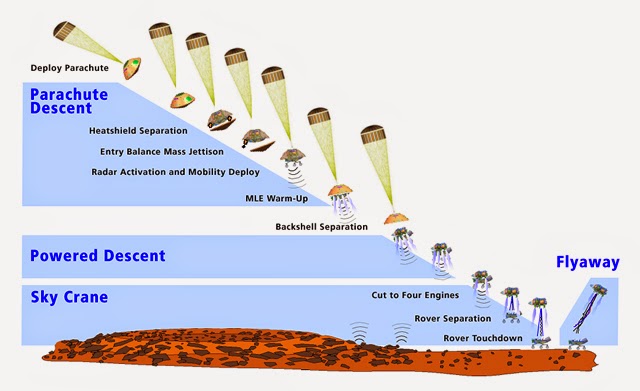Bill Gates talks candidly about the state of the US economic system and gives his thoughts
Atari celebrates its 40th year as a company
For the second time, the Internet falls for a hoax; the “Destination Time” in the first Back to the Future movie on the DeLorean’s display panel was modified to show a different date, and the picture quickly went viral
How Winamp fell from being arguably the greatest MP3 player to just another in the pack of music programs
The rise and fall of the France-wide web – another victim of the Internet revolution
A new Army data network starts to be deployed, sadly too late to catch most of the current wars
Poor ol’ RIM loses $518 million in Q1 2013 and starts cutting 5,000 jobs; they’re on my bankruptcy/death watchlist, are they on yours?
Thursday, June 28, 2012
Monday, June 25, 2012
"We had no choice but we got to cut it off...and then come down on rockets"
This really is some of the greatest advertising for a government agency I’ve ever seen. NASA recently released a video about the “seven minutes of terror,” referring to the 7 minutes between the time the Curiosity rover, set to land on Mars this upcoming August 5th, hits the top of the planet’s atmosphere, and the time in which the rover has successfully (or not) landed on the surface – all before its engineers on Earth know what has happened to it. As opposed to the previous rovers, Opportunity, Spirit, and Sojourner, which were no larger than the size of an oversized RC toy, Curiosity is the size of a small SUV and weighs 1,654 pounds. This weight and size means that it’s too large to land on the surface using the traditional “airbag” approach, and so the engineers were required to reinvent the approach. The following video released from NASA shows the descent they plan on taking to the planet’s surface, first relying on the heat shield to keep the rover safe. Next, they plan on using a supersonic parachute in order to slow the rover down to just 100m/s. After using the parachute, a sky crane will be deployed at approximately 7.5 meters above the surface; the sky crane system will slow to a halt, and the rover will be gently lowered to the surface of the planet. The descent stage then flies away to a crash landing site, and the rover is theoretically ready to begin exploring the surface of the planet.
Check the following video for some of the engineers talking about the Entry, Descent, and Landing stages, and prepare to be amazed.
Check the following video for some of the engineers talking about the Entry, Descent, and Landing stages, and prepare to be amazed.
Subscribe to:
Comments (Atom)
